Latches are a type of mechanical industrial hardware used to fasten doors, windows, cabinets and other such items that can be either open or closed. Read More…
Cabinet latches are our specialty! We are located in Torrington, CT but we are committed to serving our customers wherever they may need us! All of our products go through extensive and intensive testing to ensure that we are providing our customers with only the best possible products. For more information on what we can do for you visit our website today or get in touch via email or telephone!

Hardware Mfg. supplies stock inventory parts in addition to creating custom components for OEM and resellers. We work with a number of different industries such as agriculture, drug tablet, livestock, truck equipment, conveyors, and more.

At PROTEX® we offer light to heavy-duty fasteners, handles, flush latches, case fittings, bandclamps, catch plates and more. We manufacture a large range of over centre fasteners often known as draw latches/toggle clamps/catches/over centre toggle fasteners.
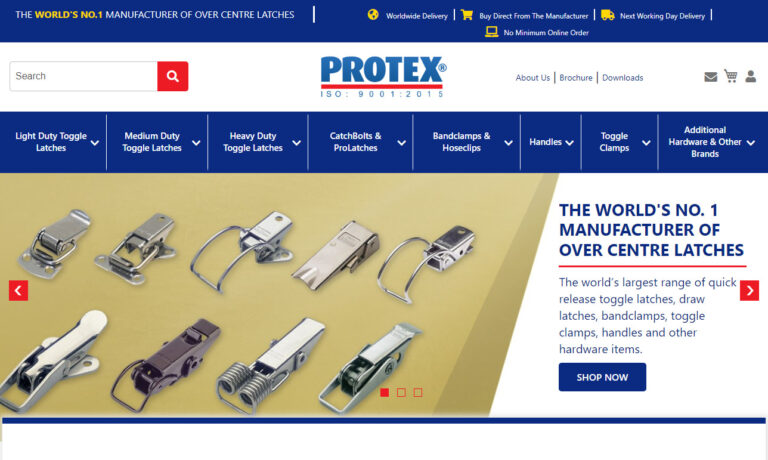
More Latch Manufacturers
What Are Latches and What Are They Used For?
Latches are essential mechanical fixtures designed to temporarily secure surfaces together. They serve a wide range of purposes, such as keeping doors, cabinets, and gates closed securely, providing reliable closure solutions in both residential and commercial environments. In industrial settings, robust latches play crucial roles in refrigeration systems, storage facilities, utility boxes, electrical enclosures, machinery access panels, and vehicles like trucks and trailers. Typically, these latches are crafted from assembled or welded die-cast, stamped, or forged metals for durability and reliability, ensuring they can withstand repetitive use, vibration, and exposure to harsh environmental conditions.
Whether you’re looking to secure an entryway, enhance workplace safety, or protect valuable equipment, latches are integral to countless applications. They are available in various forms to suit everything from light-duty household furniture to heavy-duty industrial machinery, with each type designed to meet specific performance, security, and durability requirements.
Latch Applications
Latches serve their primary purpose in securely closing and releasing two adjacent surfaces. They are designed for specific functions like door, cabinet, gate, and paddle latching across various industries including furniture, construction, transportation, security, home improvement, industrial equipment, and commercial facilities management. Latches also play a significant role in medical devices, telecommunications enclosures, HVAC systems, and marine applications, where the need for vibration-resistant, corrosion-resistant, and tamper-proof latching solutions is paramount.
- Residential Applications: Cabinets, windows, doors, child safety locks, mailboxes
- Commercial/Industrial Uses: Storage lockers, server racks, machinery guards, electrical panels, control cabinets
- Transportation: Automotive doors, glove boxes, trailer tailgates, RV and marine hatches
- Specialized Environments: Cleanrooms, food processing equipment, hazardous material storage, outdoor fencing
When selecting a latch, consider the specific use case, the level of security required, environmental conditions (such as exposure to moisture or chemicals), and the type of surface or material being joined. For instance, a stainless steel latch is ideal for marine or outdoor use due to its superior corrosion resistance, while a plastic latch may be preferred for lightweight, non-corrosive interior uses.
The History of Latches
Latches have a long history, dating back to ancient times as one of the earliest forms of modern hardware. Some of the oldest surviving examples originate from 13th-century Western Europe and China, where latches were used to secure doors, gates, and chests long before the development of modern locking mechanisms.
Among the enduring types are the Suffolk latch, developed in 16th-century England, and the Norfolk latch, from 19th-century England. Though they aren’t particularly robust or secure, they continue to be utilized today primarily for decorative or whimsical purposes, adding historical character to period homes and restoration projects.
Since their inception, latches have reliably secured doors shut without the ability to lock them, a task historically reserved for bolts. However, modern advancements have introduced latches that can now both fasten and lock doors, providing enhanced security for residential, commercial, and industrial properties. Innovations such as electric strike plates, spring mechanisms, magnetic closures, and other technologies have further transformed door security systems, increasing convenience and safety for users.
Today’s latching hardware incorporates ergonomic designs, tamper resistance, quick-release features, and even smart connectivity for integration with access control systems. This evolution enables latches to meet the changing needs of industries, from automated manufacturing to secure data center enclosures.
Latch Design
Production Process
Manufacturers use precision die casting, metal stamping, or forging methods to fabricate latches, depending on the design and application requirements. These processes ensure high strength, consistency, and cost-effectiveness, especially for large production runs. Components may also be assembled or spot-welded as required to achieve specific mechanical properties or aesthetic finishes. Advanced manufacturing technologies, such as CNC machining and 3D printing, allow for greater customization and tighter tolerances, supporting the development of specialized or custom latch solutions for unique project needs.
Materials
Choosing the right material is crucial for latch types. Metals, known for their durability and resistance to impact, are often preferred for high-security and heavy-duty applications. Heavy-duty latches, designed for frequent and high-stress applications, are typically crafted from various types of metals to ensure longevity and reliability under demanding conditions.
Common latch materials include:
- Stainless Steel: Offers excellent corrosion resistance, strength, and longevity, ideal for outdoor, marine, and medical applications.
- Steel (Carbon or Alloy): Provides high strength and cost-effectiveness, suitable for industrial and commercial doors.
- Aluminum Alloy: Lightweight and corrosion-resistant, commonly used in automotive and aerospace latches.
- Cast Iron: Known for its robustness, used in traditional and decorative latches.
- Brass: Offers aesthetic appeal and corrosion resistance, popular in architectural hardware.
- Thermoplastics: Used for lightweight, corrosion-resistant, and vibration-absorbing latches, especially where electrical insulation is beneficial.
Incorporating thermoplastics in latch production enhances flexibility and significantly boosts shock and impact resistance. Unlike metals, plastics excel in absorbing vibrations, adding an extra layer of durability to the latches and making them suitable for sensitive electronic enclosures and transportation applications.
Considerations and Customization
When manufacturers choose or create a custom latch for a customer, they must consider several design factors: the material used, the mounting design, and the latching position. The performance of an industrial hardware latch depends on specific usage requirements, such as applied force, operational frequency, exposure to environmental conditions and weather, resistance to tampering, and compatibility with safety regulations.
Need a latch tailored to your exact specifications? Contact a latch manufacturer to discuss your custom requirements, from dimensions and mounting orientation to color, finish, and performance features.
Mounting Design
When choosing a latch type, manufacturers consider both the intended use and the space available on the mounting surface. Certain surfaces are better suited for heavy-duty latches, so it’s crucial that the latch mechanism isn’t overly bulky or heavy for the mounting surface. Various mounting options exist for latches:
- Concealed Mounting: Hides the latches and their mounting hardware behind the panel for a clean, tamper-resistant look.
- Edge Mounting: Positions the latch components along the edge of the mating panels, often used in cabinetry.
- Face Mounting: Involves mounting the latches directly onto the front surface of the panel, providing easy access for adjustment and maintenance.
- Side Mounting: Positions both the latch and the keeper on the rear of the connecting panels, hidden from view on the cabinet or door front.
- Single-Hole Mounting: Installs the latch within a single hole on the panel’s face, often used for paddle and cam latches.
Latching Position
The positioning of the latch is crucial for both security and ease of use. A primary latching position ensures the door or panel is firmly closed, providing maximum security. A secondary latching position keeps the door secured but not fully closed, useful for ventilation or temporary access control.
Looking for advice on best latch positioning for your application? Consult with an industry expert or check out our installation guides for detailed recommendations.
Latch Features
Most latches typically involve plates or brackets positioned on two adjoining surfaces. One bracket secures a pin or post, while the other holds a notch, groove, or seal into which the pin fits snugly. When the pin is inserted between the brackets of the latch, it prevents the door, cabinet, gate, or lid from being opened.
- Self-latching: Some latches automatically engage when doors or lids are closed, enhancing convenience and safety.
- Lockable: Many latch designs can be paired with padlocks, cam locks, or integrated locking mechanisms for added security.
- Adjustability: Certain latches allow for tension or compression adjustment to ensure a tight, vibration-resistant fit.
- Quick-release: Designed for rapid access in emergency situations or frequent use scenarios.
Considering latches for high-traffic or safety-critical areas? Explore solutions featuring fail-safe or fail-secure mechanisms for peace of mind.
Types of Latches
Latches are employed across diverse contexts, requiring a wide array of industrial design types and capabilities. Some are named after the materials they’re made from, others after the objects or mechanisms they secure, and still more after their components or operational methods. Below are common latch types, their features, and ideal use cases:
Stainless steel latches provide robust strength and excellent resistance to corrosion, making them ideal for applications exposed to moisture, saltwater, frequent use, or harsh weather conditions. Examples include marine, food processing, and outdoor security enclosures.
Plastic latches, crafted from robust thermoplastics, offer a lightweight and customizable latching solution. They can be easily fabricated to suit specific designs and requirements, and are valued in electronics, automotive interiors, and lightweight cabinetry. Additionally, various alternatives such as compression latches, draw latches, bolt latches, spring latches, and slam latches are also available.
Cane bolt latches are essentially oversized and sturdier versions of barrel bolts. They feature a rod that slides through two holders, commonly used to secure exterior doors and gates in industrial settings. When a gate is shut, the rod inserts into a drilled hole on the driveway surface, ensuring closure. Additional holes may be drilled to hold the gate open as needed. These bolts require manual operation to lock and unlock. By engaging with a floor-mounted hole, they offer enhanced strength and an extra layer of security, especially for agricultural, warehouse, and perimeter security gates.
Bolt latches represent one of the most straightforward types of latches. They come in single or double bolt configurations and are commonly employed on doors and gates, offering a basic, reliable barrier to entry for both indoor and outdoor applications.
Spring latches, or spring load latches, operate on a straightforward mechanism. When the door is shut, an angled bolt edge interacts with a spring, securing the door. To unlock the latch, users simply rotate the handle, retracting the spring and enabling the door to open easily. These are common in residential doors, cabinets, and utility enclosures.
Draw latches, also known as tension or toggle latches, serve to bring surfaces together and firmly secure them. They typically comprise two plates and a connecting strap or pin, offering versatility for various household and office items such as suitcases, briefcases, trunks, toolboxes, and jewelry boxes. They are also adaptable for use in corners and with hinges. Known by names like pull-down latches, over-center fasteners, or toggle clamps, they find frequent application in electronic enclosures and equipment control panels, ensuring a tight, protective seal against dust and water ingress.
A draw latch consists of two essential components: a catch and a blade. One hook is affixed to a lever, and as the latch engages, these hooks interlock under tension, effectively uniting the secured parts. This tension is generated when the lever is pressed, pulling the drawbar towards the catch, thereby creating a secure closure.
Compression latches, akin to draw latches, establish a snug connection and are frequently employed in applications where a seal between the adjoining components’ edges is necessary, such as NEMA enclosures, electrical cabinets, and HVAC access panels.
Paddle latches employ a unique flip-out handle mechanism designed for secure closure and easy opening as needed. These industrial latches are robust and sizable, ideally suited for various transportation applications. They find extensive use in aerospace, automotive, recreational vehicles, railways, marine environments, and off-highway vehicles, where ruggedness and reliability are essential.
Slam latches engage securely when a door is forcefully closed. Also called push-to-close latches, they feature spring-loaded mechanisms that are sturdier than standard spring latches. Upon door closure, they automatically lock as the cam rises and rotates into place behind the wall. Ideal for high-traffic industrial environments, they ensure doors lock reliably with each closure, making them popular for toolboxes, equipment housings, and safety doors.
Magnetic latches excel in lightweight applications where mechanical latching isn’t necessary. They find frequent use in drawers, HVAC panels, trucks, and trailers, effectively securing surfaces without the need for locking mechanisms, thus minimizing potential damage to doors and surrounding structures. Magnetic latches are favored for their silent operation and ease of use.
SR latches, formally known as set-reset latches, belong to the category of flip-flop circuits. These circuits are designed to maintain two stable states, capable of storing information. By utilizing input and output signals, SR latches effectively secure and release digital electronic systems, making them vital in industrial automation and electronics.
Ring latches, also known as ring gate latches, utilize a prominent ring for easy locking and unlocking. To unlock, one simply lifts and twists the ring; when released, it securely locks back into position. These latches find common use in gardens and backyards, emphasizing ambiance over stringent security measures, and are often chosen for decorative fencing and gates.
T-handle latches serve to securely fasten doors and lids, ensuring they are closed and locked. These are commonly found on access panels, service doors, and utility cabinets requiring frequent access with reliable closure.
Latch bolts, integral to front door handles, operate with a spring-loaded mechanism positioned at their upper edge and a corresponding strike plate. When the door is pulled shut, the spring-loaded bolt engages with the strike plate, retracting momentarily before extending fully to securely lock the door in place. This ensures the door remains closed once in position, making them a staple in residential and commercial door hardware.
Rim latches operate by affixing a surface-mounted box and latch mechanism that hooks into the doorframe keeper. Originating from the Colonial era, they are relatively insecure on their own but can be bolstered by pairing them with a hinge and lock assembly for enhanced security. Rim latches are often used in restoration projects and on interior doors for period authenticity.
Industrial latches, known for their robustness and size, are employed in various heavy-duty settings. These latches find application across a spectrum of industries such as marine, railway, automotive, recreational vehicles, aerospace, and off-highway vehicles. This label is reserved for latches capable of withstanding rigorous industrial and commercial demands, including vibration, impact, and exposure to chemicals.
Lever latches are employed to safely lock overhead bins found in vehicles such as RVs and buses, as well as storage compartments in aircraft and trains.
Gate latches secure the entrances and exits of enclosed areas like agricultural fencing, home fencing, or high-security fencing. They come in various styles, including thumb latches, ring latches, and self-latching options for convenience and safety.
Door latches serve the crucial function of securing doors shut. They come in various types, including spring latches, latch bolts, dead latches, slam latches, and cam locks, each designed for different applications and security needs. Door latches are a central component in residential, commercial, and institutional building hardware.
Pawl latches excel in their ability to accommodate a wide range of grip sizes and their versatile application in slide compression fittings. They are particularly ideal for securing electrical switchboards, HVAC enclosures, and various types of industrial machinery and equipment, providing a simple yet effective closure mechanism.
Trigger latches are designed with simplicity in mind, offering straightforward functionality. Primarily employed to secure electronic and HVAC enclosures, they operate effectively with a basic mechanism. Depressing the trigger on the lever latch releases the pawl, facilitating door opening. As the lever moves upward concurrently, it doubles as a convenient handle for door operation.
Shutter latches, evolving over time, now commonly are surface-mounted strap hinges, serving the purpose of securing window shutters in place, especially in historic or coastal properties.
Searching for a specific latch type for your project? Browse our comprehensive latch manufacturer directory or contact our technical advisors for personalized recommendations based on your performance, aesthetics, and compliance requirements.
Accessories for Latches
Your latches might include a variety of accessories tailored to their specific use. These can range from strike plates, handles, hinges, and springs to bolt springs, anchors, latch sets, installation kits, and tools such as screwdrivers. Additional accessories may include dust covers, weather seals, escutcheon plates, and adjustment screws for tension or alignment.
Accessories not only enhance the functionality and lifespan of your latch hardware but can also improve installation efficiency and user safety. When evaluating latch kits or hardware sets, consider whether the necessary mounting hardware, spacers, or gaskets are included, especially for outdoor or industrial installations.
Latch Installation
Each latch is unique, making each installation process distinct. However, here are some general guidelines for installing latch hardware:
- Positioning: Begin by positioning the latch on the edge of the surface to establish your work area. Mark the installation points using a pencil or template for accuracy.
- Preparation: If necessary, remove the latch and clear out the central area and the inner perimeter of the surface using a chisel, drill, or router. Ensure that you chisel to the correct depth for flush mounting.
- Mounting: Proceed with installing the latch, which may involve screwing, bolting, or welding, depending on the latch type and material. Double-check alignment to ensure smooth operation.
- Adjustment: Test the latch mechanism and make any needed adjustments for proper engagement and release.
- Finishing: Secure all fasteners and clean the installation area. Apply any required lubricants or protective coatings.
For detailed, step-by-step instructions, refer to your supplier’s installation manual or view our online how-to guides tailored to specific latch types and applications.
Proper Care for Latches
Maintaining your latches is simple yet crucial for longevity and aesthetics. Routine maintenance prevents corrosion, wear, and operational issues:
- Chrome Finishes: Regular wiping with a damp cloth suffices to remove fingerprints and smudges.
- Clear Coat Finishes: Occasional washing using a soft buffing cloth and mild, non-abrasive soap preserves appearance.
- Bronze Finishes: Require a gentle touch—use a small amount of vegetable oil or a drop of mild household detergent, ensuring careful application due to bronze’s sensitivity.
- Stainless Steel: Clean with a damp cloth or specialized stainless steel cleaner to prevent spotting and maintain corrosion resistance.
- Moving Parts: Lubricate pivots and springs as needed with a suitable lubricant to ensure smooth operation.
Regular inspection for rust, loose fasteners, or misalignment can prevent costly repairs and extend the service life of your latch hardware. For outdoor or industrial latches, periodic application of protective coatings may be recommended.
Standards for Latches
Make sure that whichever latch you choose for your application, it bears the certifications of BHMA (Builders Hardware Manufacturers Association) and ANSI (American National Standards Institute). These stamps guarantee top-notch construction quality, mechanical performance, and safety. For applications in public facilities, schools, hospitals, or government buildings, meeting recognized standards is often a legal requirement.
Additionally, consider other standard requirements based on your specific application and location:
- ADA (Americans with Disabilities Act): For accessible hardware in public spaces.
- UL Listed: For fire-rated doors and safety enclosures.
- IP Ratings: For dust- and water-resistant latches in outdoor, marine, or cleanroom environments.
- RoHS Compliance: For environmentally responsible materials, especially in electronics and export markets.
To learn more about compliance and certification, consult industry experts and relevant governmental authorities, or explore our standards resource center for up-to-date guidelines and best practices.
Things to Consider When Purchasing Latches
Before you buy latches, it’s best to compile a detailed list of your specifications and the latch features you need to consider. This thoughtful approach will streamline your selection process and ensure optimal performance. Key considerations include:
- Determining the number of latches required for your project or facility
- Identifying their intended use and performance requirements (e.g., load capacity, frequency of use, need for locking or quick-release features)
- Assessing the type of surface or material they’ll be mounted on (metal, wood, plastic, composite, glass)
- Confirming any standard specifications or compliance requirements (BHMA, ANSI, ADA, UL, IP, RoHS)
- Evaluating environmental factors such as exposure to moisture, chemicals, or extreme temperatures
- Considering the desired aesthetic, color, or finish for architectural or furniture applications
- Defining your timeline and budget constraints, including installation and ongoing maintenance costs
After compiling all your considerations, the next step is finding the ideal manufacturer. We’ve curated a list of latch manufacturers known for their expertise and reliability. Each has a detailed profile outlining their products and services. Review these profiles against your specifications. Select three or four that closely match your needs. Contact each to discuss your requirements, including product samples, technical support, and lead times. After these conversations, compare their offerings and decide accordingly.
Still deciding? Ask questions like:
- Which latch type is best for high-security outdoor gates?
- What are the most tamper-resistant latching solutions for retail display cases?
- How do I ensure ADA compliance for commercial door latches?
- Can I get custom colors or finishes for architectural latches?
Ready to request a quote or compare latch suppliers? Browse our full directory of latch manufacturers today to find the perfect fit for your project!
What are latches and what are they used for?
Latches are mechanical fixtures designed to temporarily secure surfaces together, such as doors, cabinets, and gates. They provide reliable closure solutions in residential, commercial, and industrial settings, ensuring safety, security, and convenience in countless applications.
What are common applications for latches?
Latches are used in a variety of settings, including residential spaces (cabinets, windows, child safety locks), commercial and industrial areas (storage lockers, server racks, electrical panels), transportation (automotive doors, trailer tailgates), and specialized environments like cleanrooms and marine equipment. Their design and material selection often depend on the required level of security and environmental conditions.
What materials are latches made from?
Latches are manufactured from materials such as stainless steel, carbon or alloy steel, aluminum alloy, cast iron, brass, and thermoplastics. The chosen material depends on factors like strength, corrosion resistance, weight, aesthetics, and the specific application environment.
What are the main types of latches available?
Common types of latches include bolt latches, spring latches, draw latches, compression latches, paddle latches, slam latches, magnetic latches, ring latches, T-handle latches, latch bolts, rim latches, industrial latches, lever latches, gate latches, door latches, pawl latches, trigger latches, shutter latches, and SR latches. Each type is tailored for specific functions and environments.
What features should I look for in a latch?
Important latch features include self-latching mechanisms, lockability, adjustability for tension or compression, quick-release capabilities, vibration resistance, corrosion resistance, tamper-proof design, and compliance with relevant standards for safety and performance.
How do I install latches properly?
To install a latch, position and mark the mounting points, prepare the surface if necessary using a chisel, drill, or router, and secure the latch using screws, bolts, or welding as required. Adjust for smooth operation and ensure all fasteners are properly tightened. Follow manufacturer instructions for best results.
What standards and certifications should latches meet?
Quality latches should meet certifications from BHMA (Builders Hardware Manufacturers Association) and ANSI (American National Standards Institute). For certain applications, ADA accessibility, UL fire ratings, IP dust and water resistance, and RoHS compliance may also be required depending on use and location.
What should I consider before purchasing latches?
Consider the number and type of latches needed, performance requirements, mounting surface, compliance standards, environmental factors, desired aesthetics, budget, and maintenance needs. Reviewing manufacturer profiles and consulting with suppliers can help ensure the right latch choice for your project.


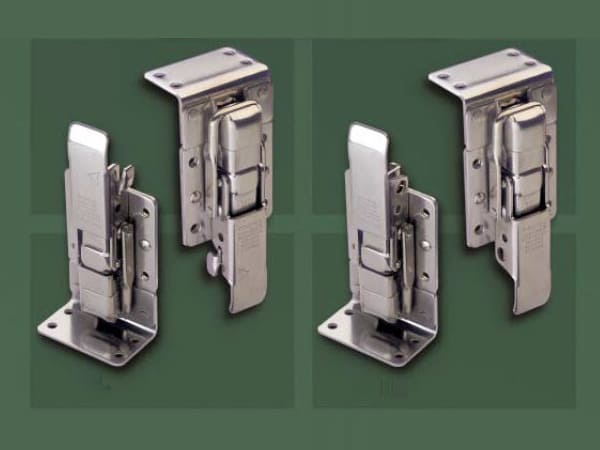
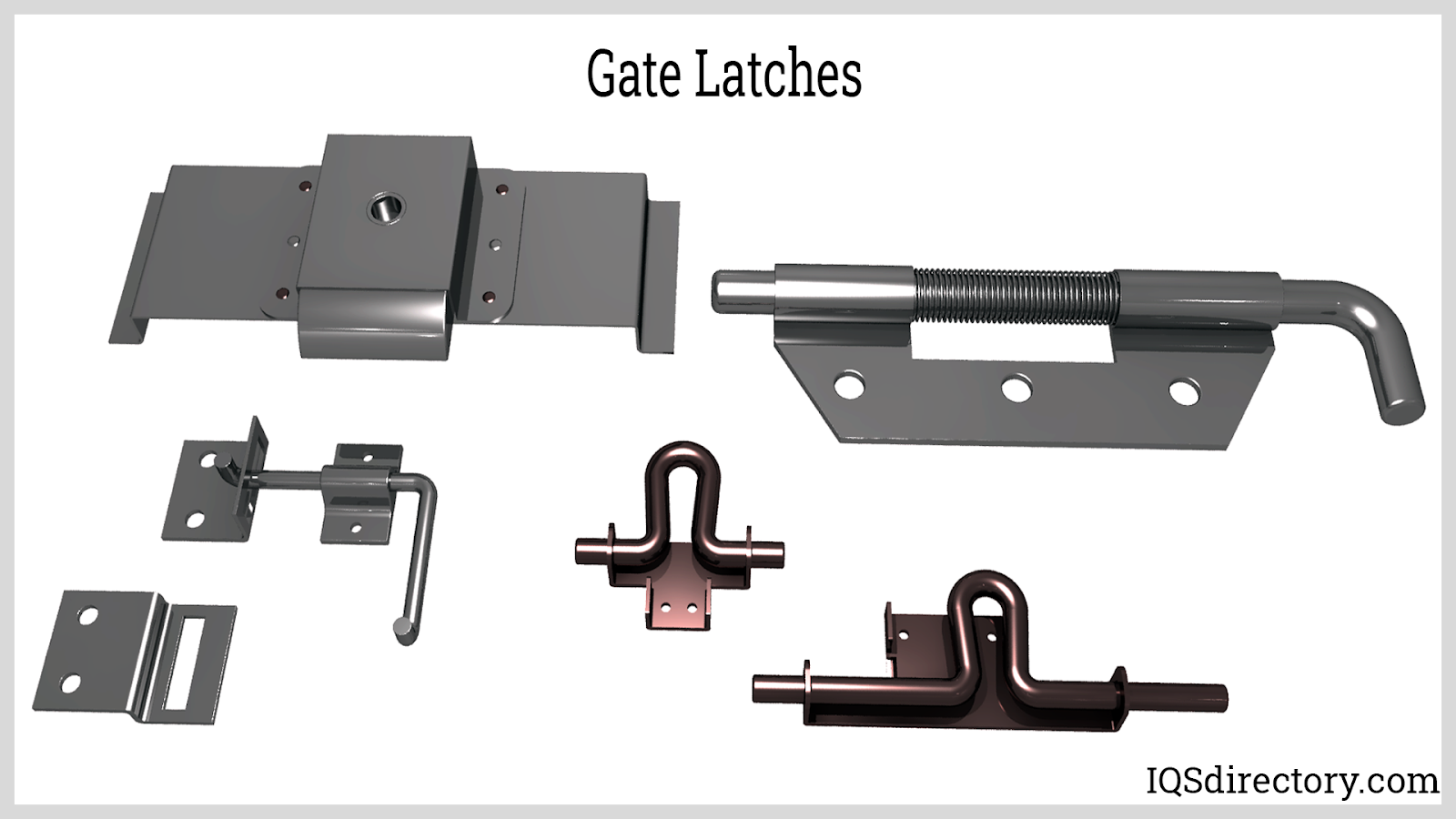
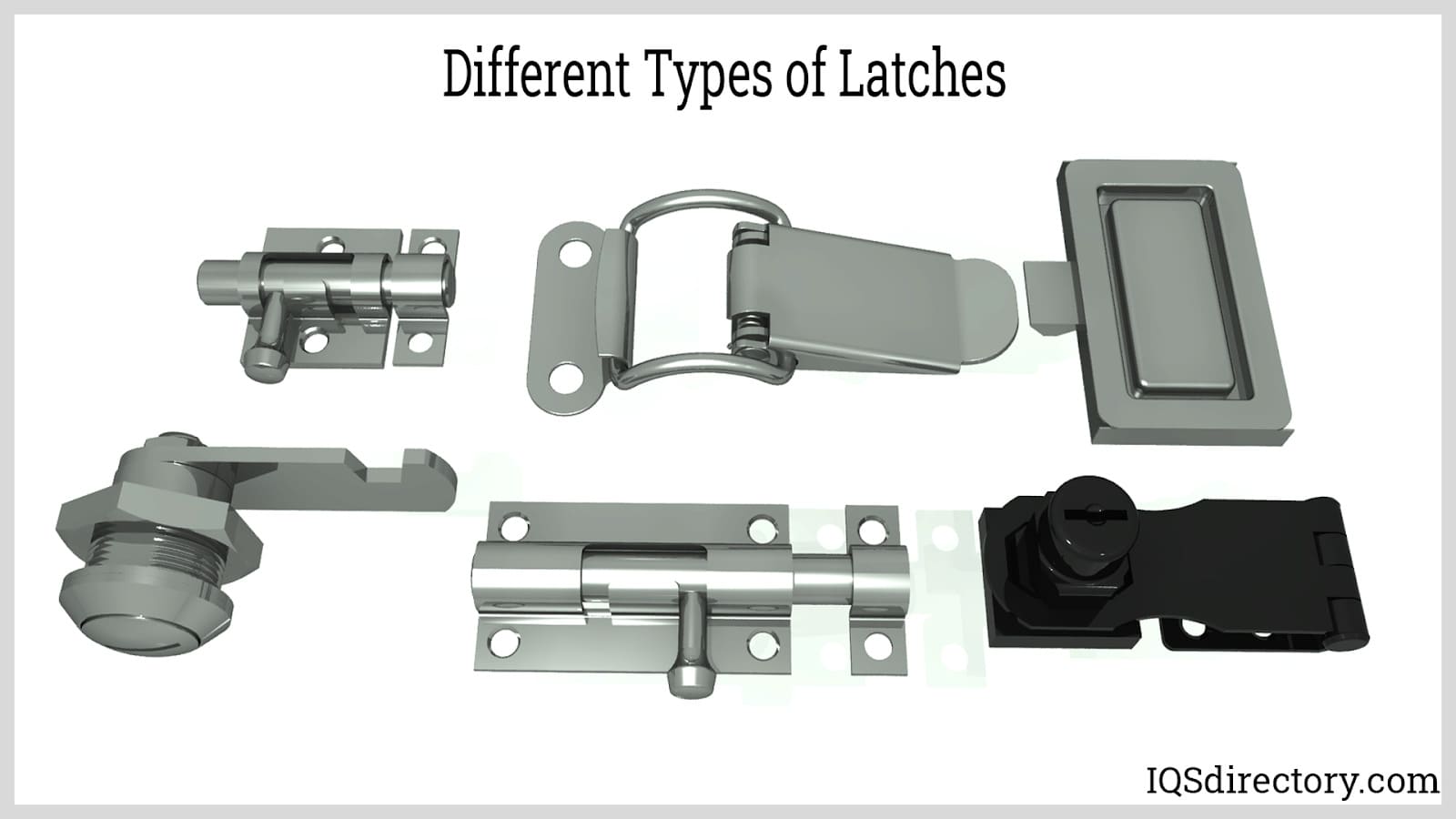
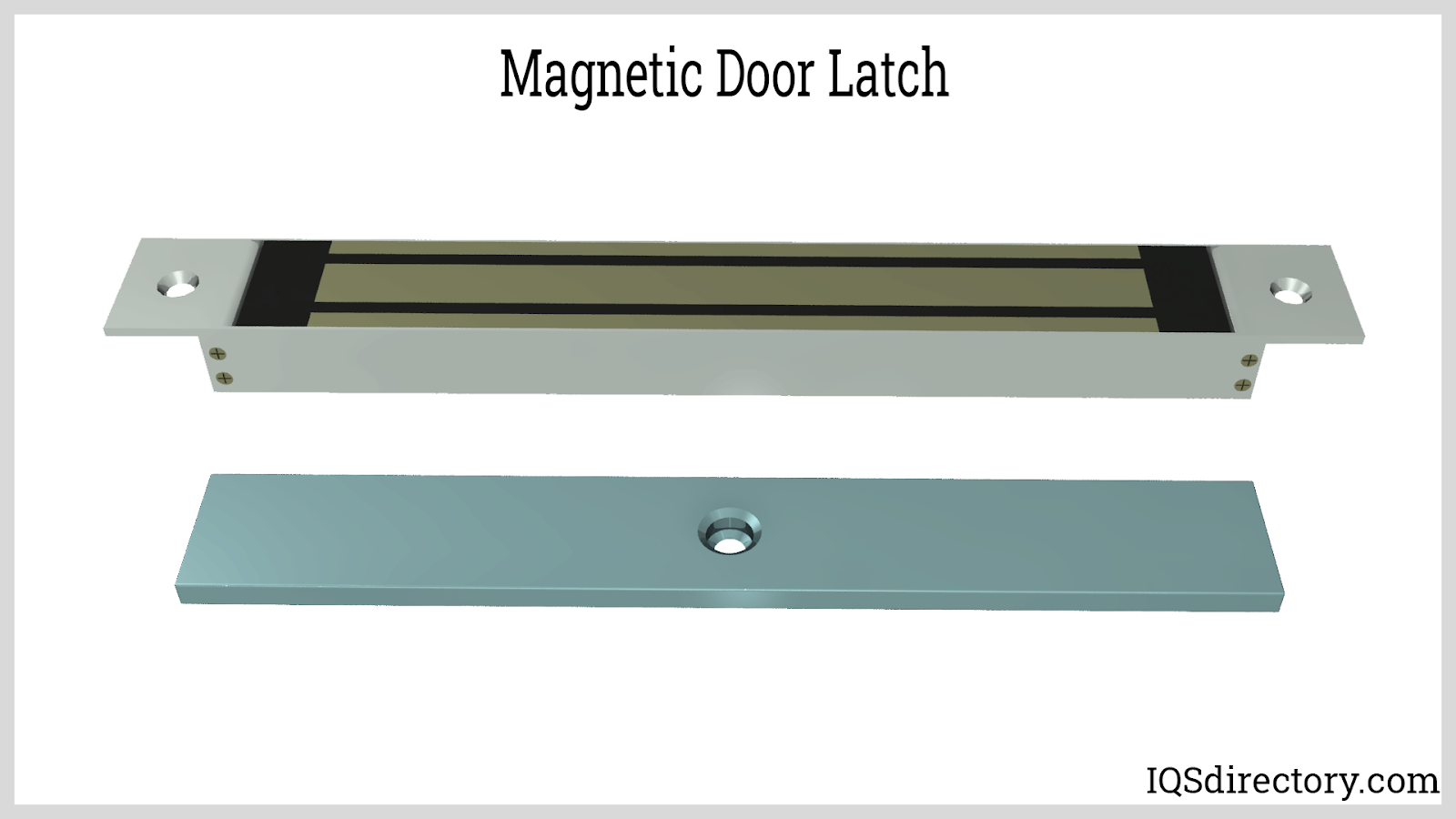
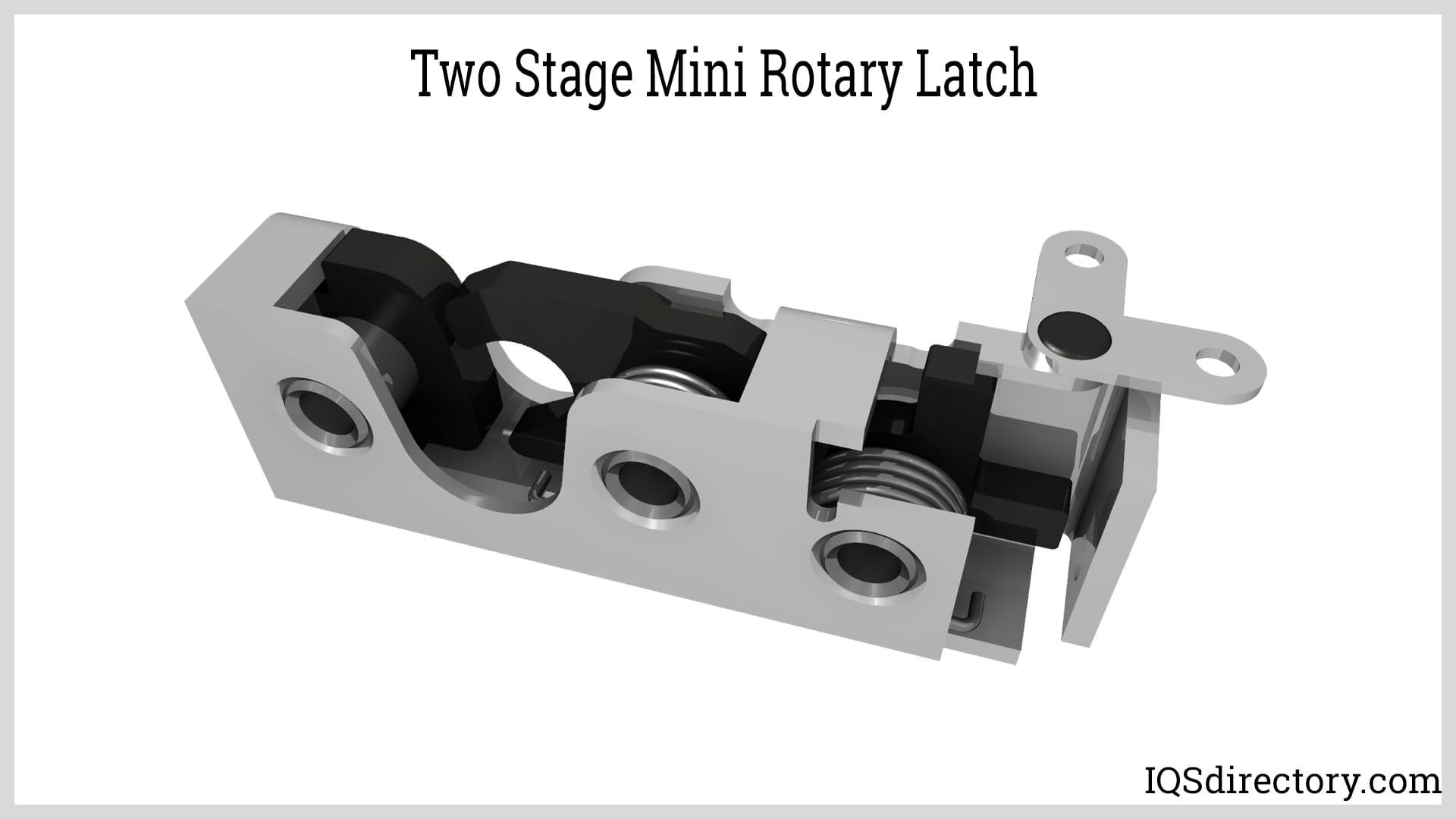
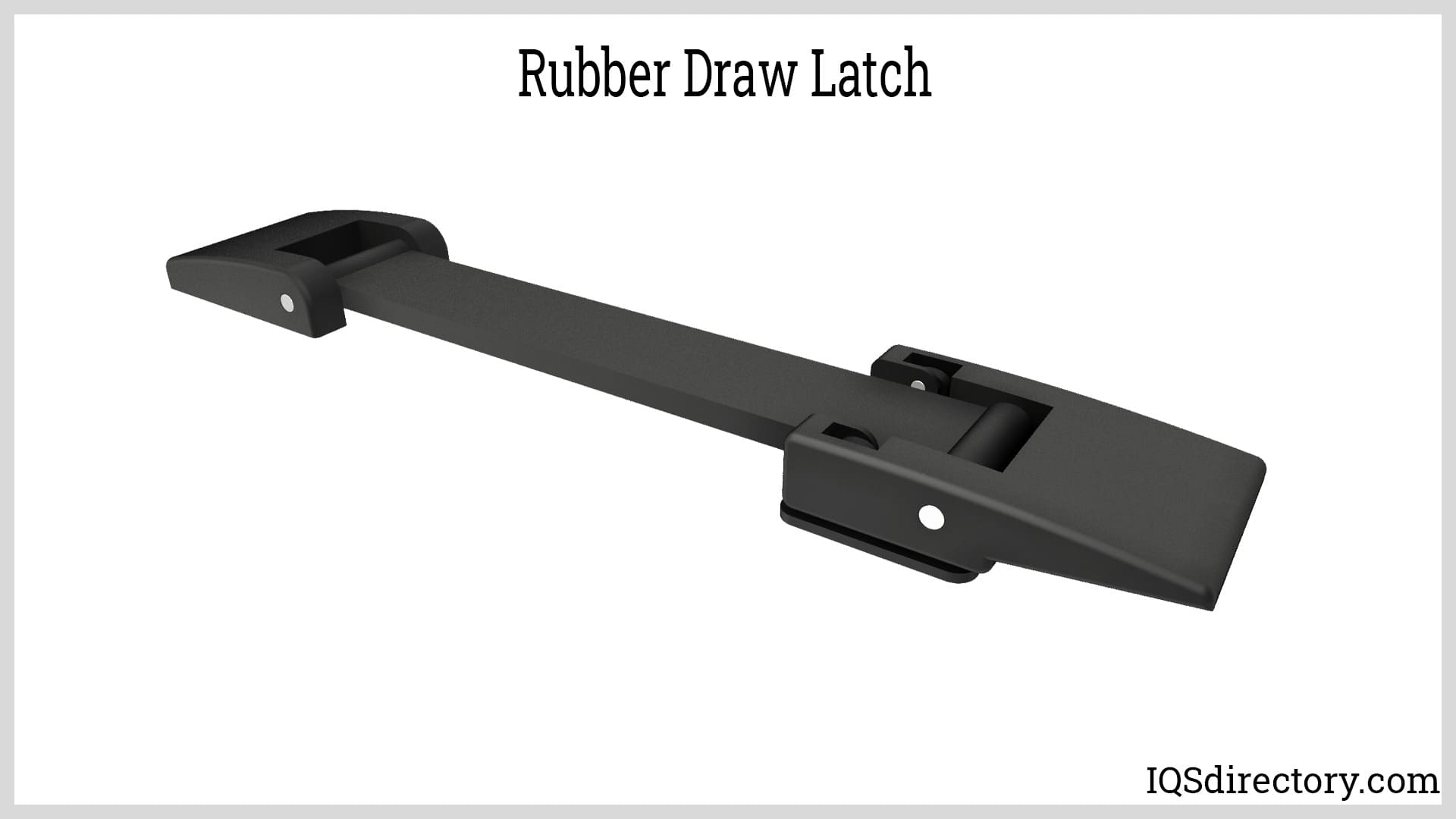
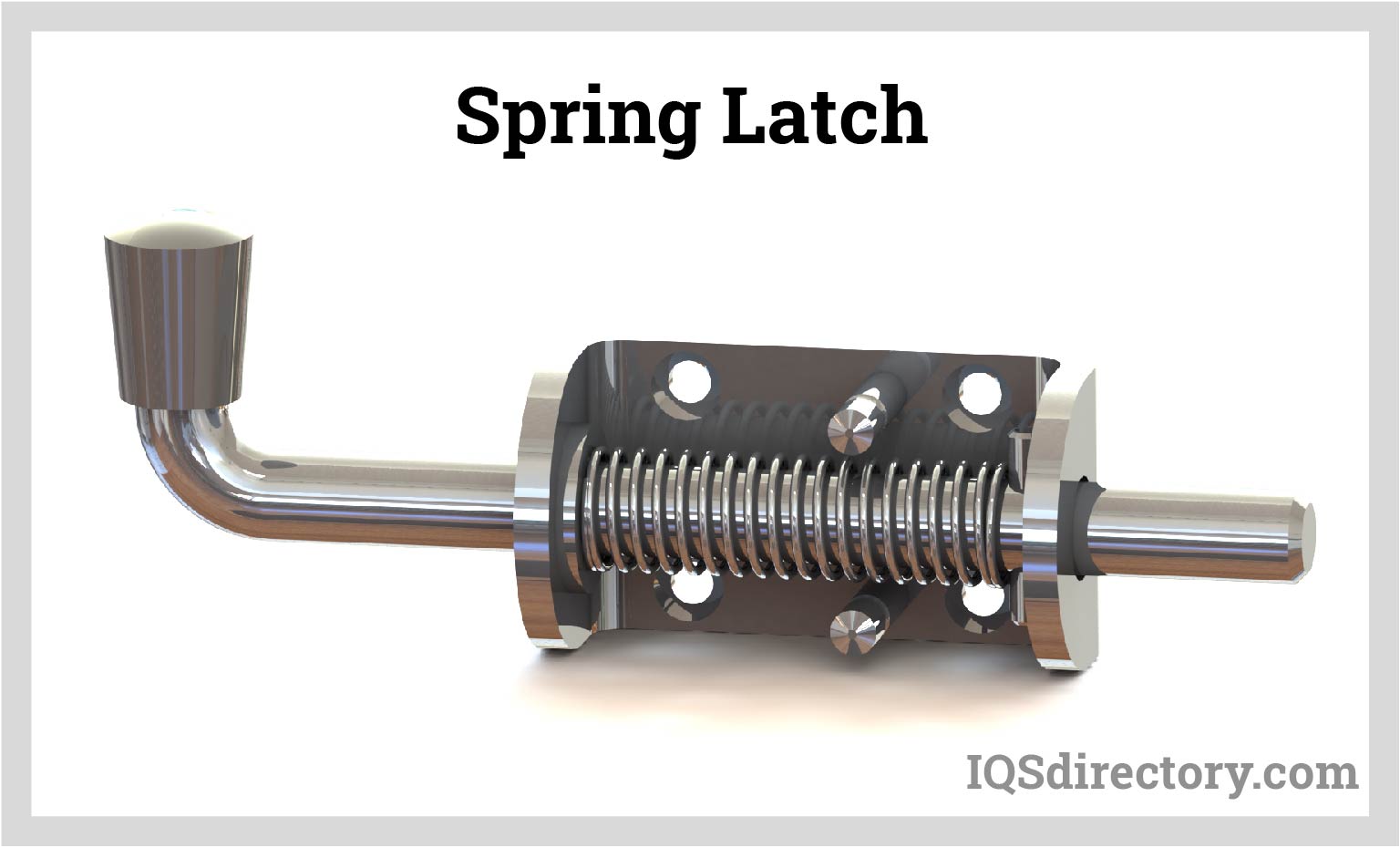
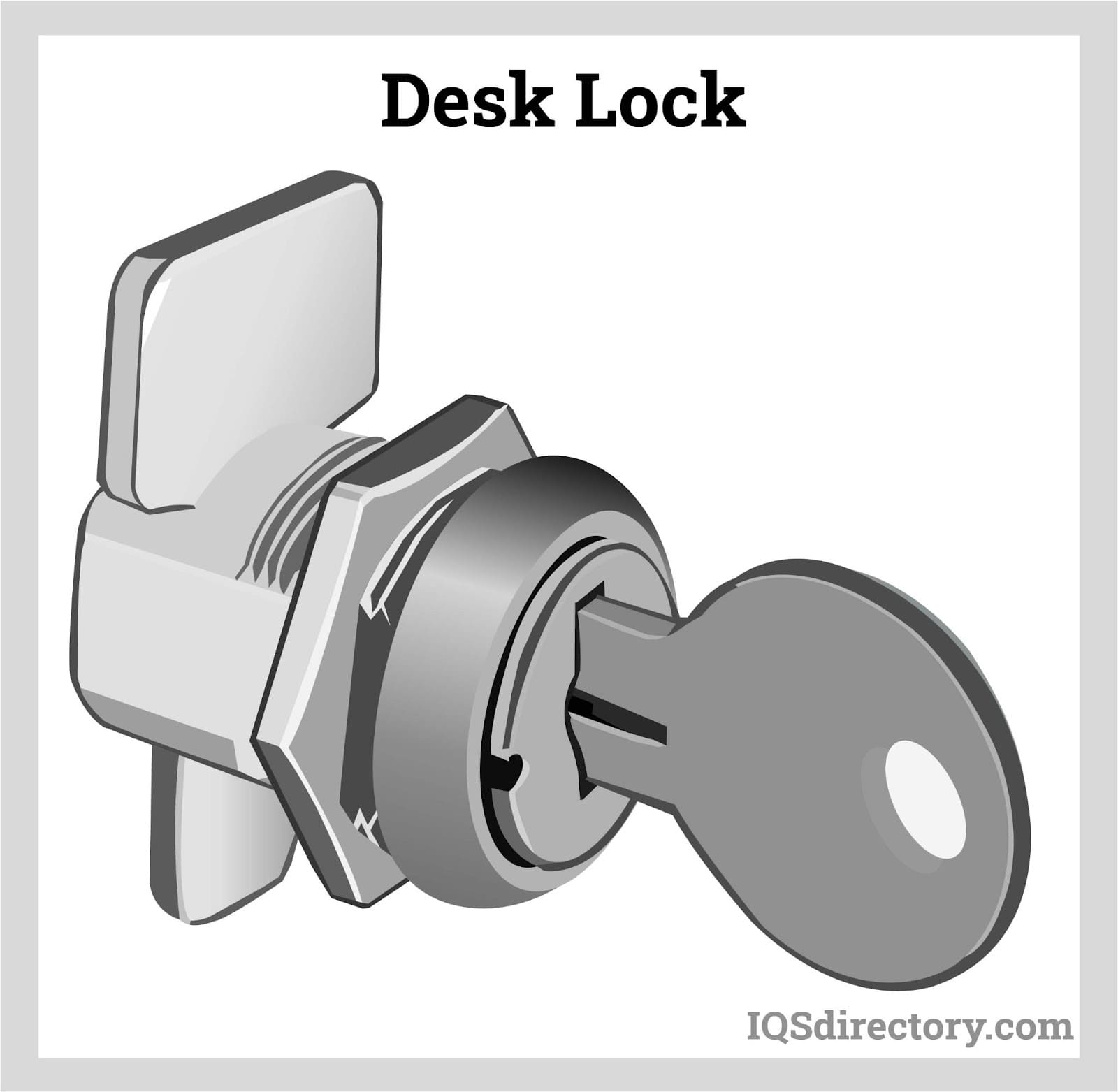
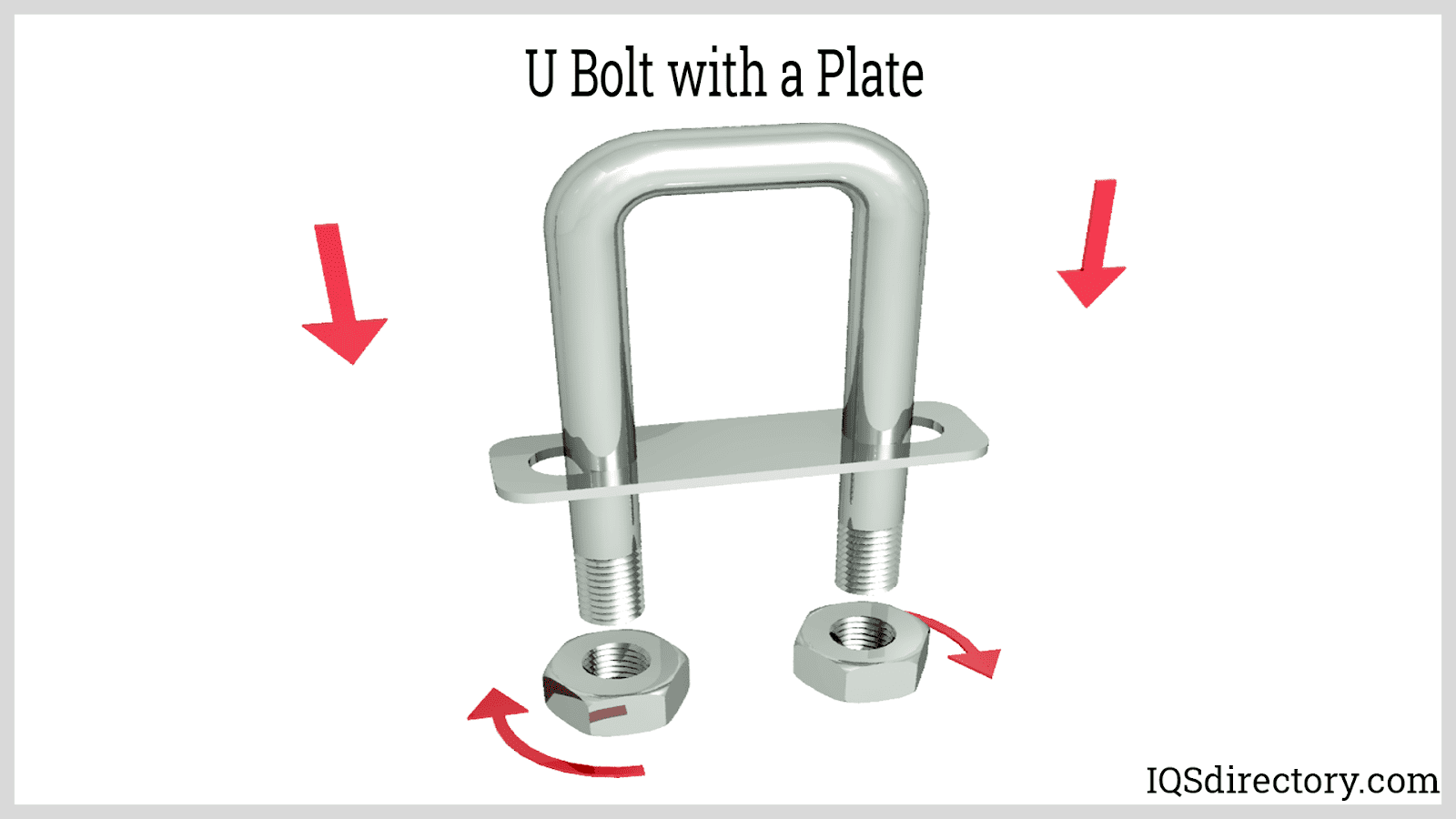
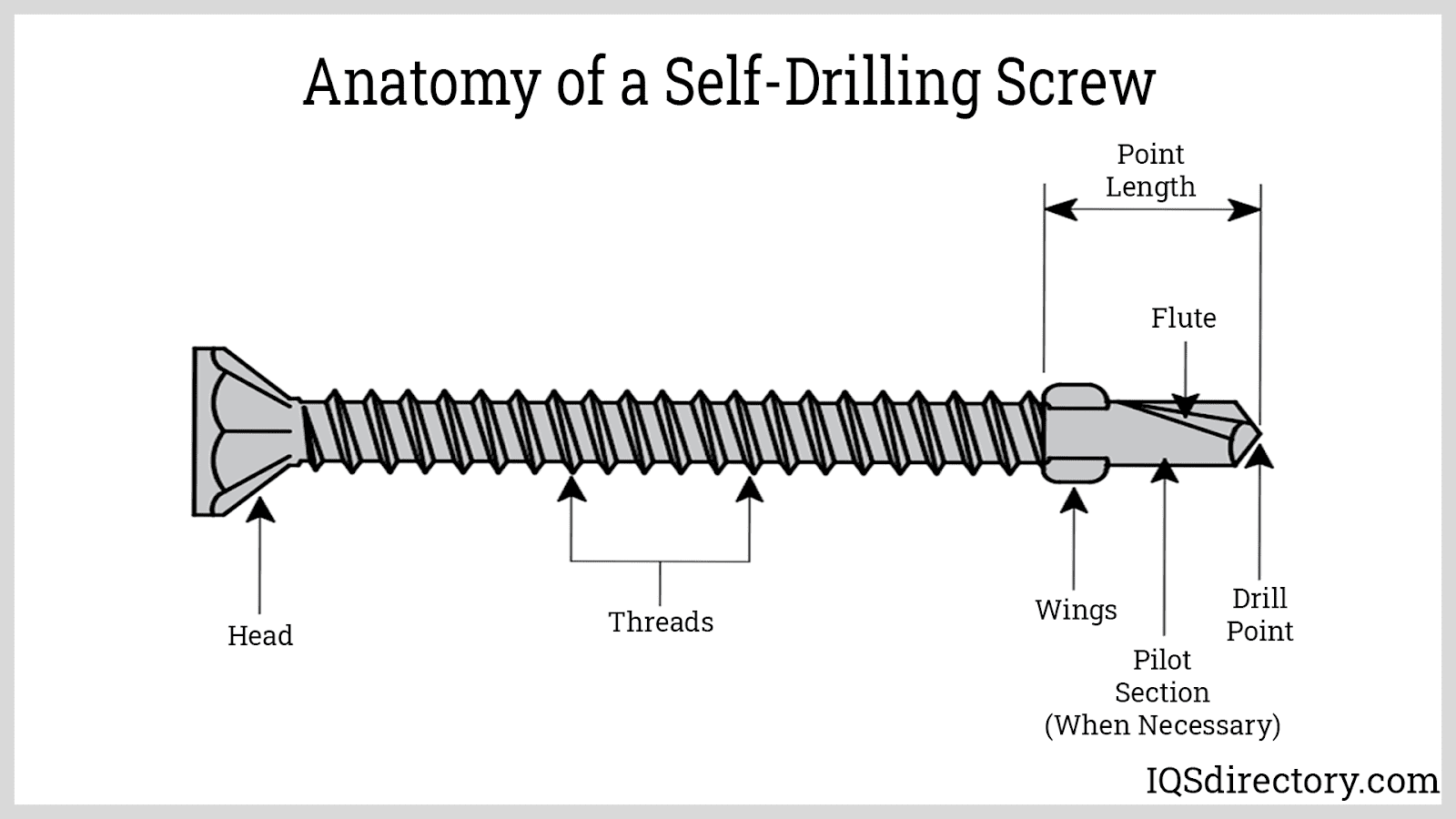
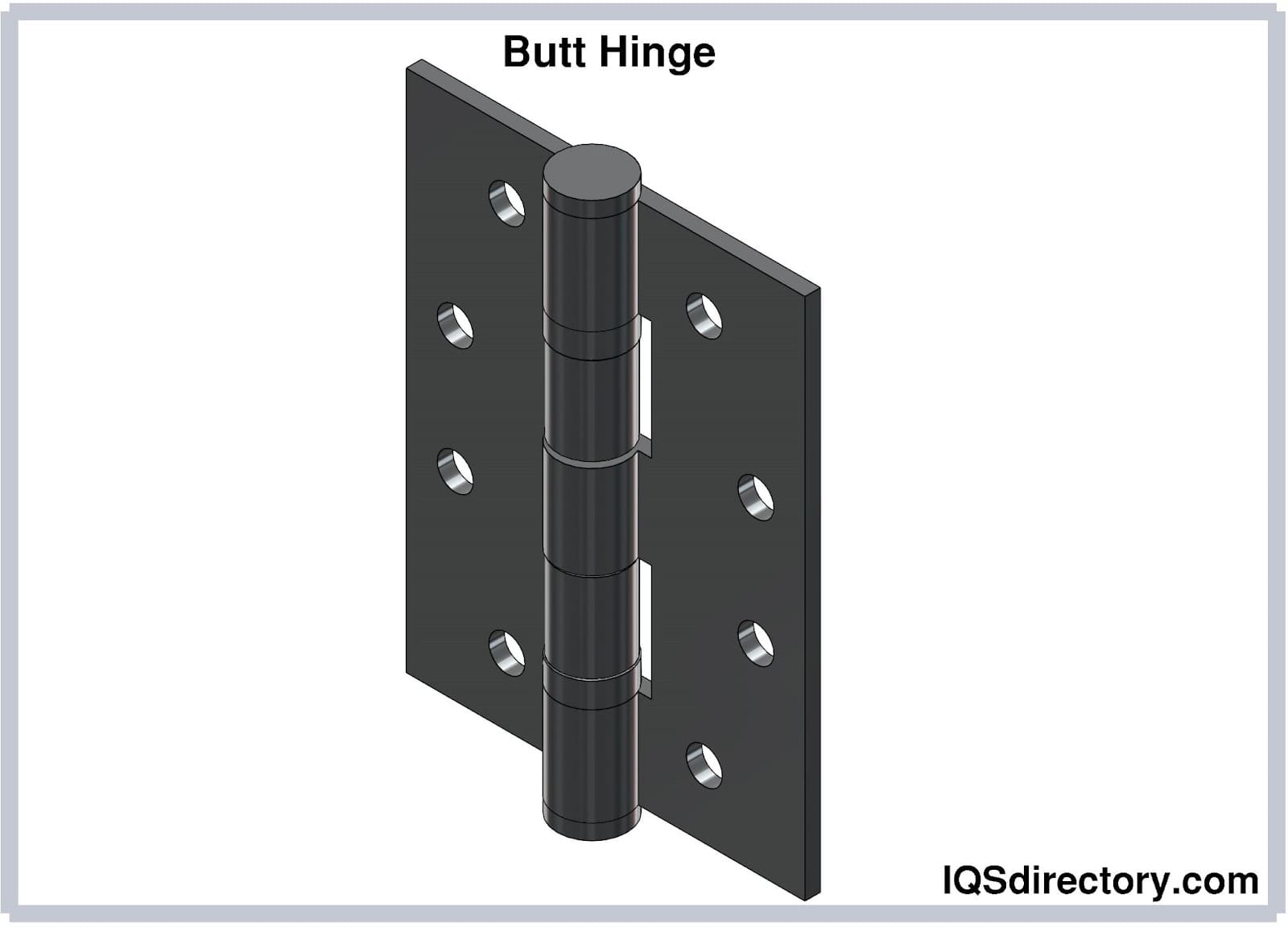
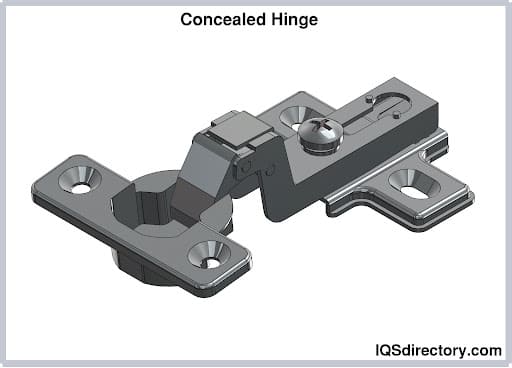
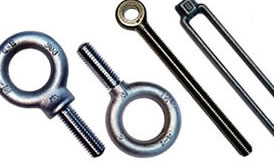 Bolts
Bolts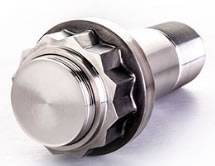 Fasteners
Fasteners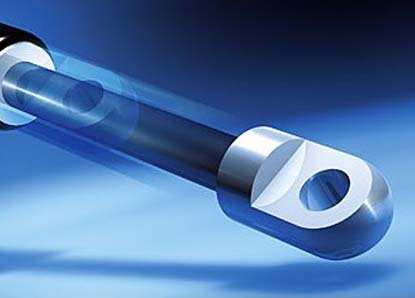 Gas Spring
Gas Spring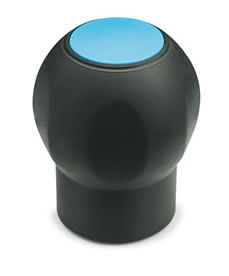 Handles
Handles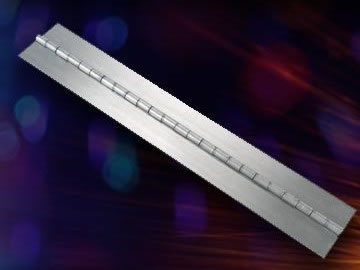 Hinges
Hinges Latches
Latches Locks
Locks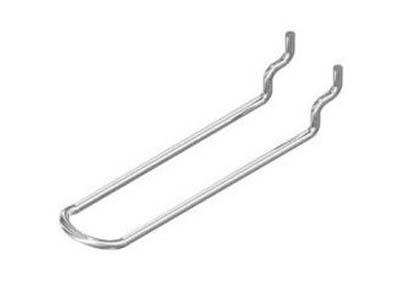 WIre Hooks
WIre Hooks Castings & Forgings
Castings & Forgings Bulk Material Handling
Bulk Material Handling Electrical & Electronic Components
Electrical & Electronic Components Flow Instrumentation
Flow Instrumentation Hardware
Hardware Material Handling Equipment
Material Handling Equipment Metal Cutting Services
Metal Cutting Services Metal Forming Services
Metal Forming Services Metal Suppliers
Metal Suppliers Motion Control Products
Motion Control Products Plant & Facility Equipment
Plant & Facility Equipment Plant & Facility Supplies
Plant & Facility Supplies Plastic Molding Processes
Plastic Molding Processes Pumps & Valves
Pumps & Valves Recycling Equipment
Recycling Equipment Rubber Products & Services
Rubber Products & Services